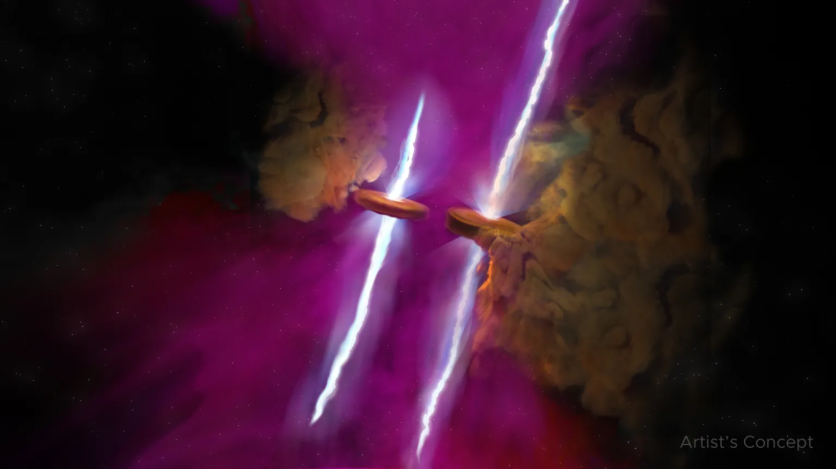Using its advanced capabilities to scrutinize a group of young stars, NASA's James Webb Space Telescope has uncovered a jaw-dropping revelation about a long-studied star known as WL 20.

NASA's James Webb Space Telescope Finds a 'Twin' Secret in a Long-Studied Star
Astronomers have monitored the region for decades with at least five telescopes. However, NASA's James Webb Space Telescope's unprecedented resolution and specialized instruments finally discerned WL 20S as a twin star system formed between two and four million years ago.
The breakthrough, showcased at this week's 244th meeting of the American Astronomical Society, was achieved through Webb's Mid-Infrared Instrument (MIRI). MIRI not only identified the twin stars but also detected identical jets of gas emanating from their northern and southern poles.
Astronomer Mary Barsony, who led the research, expressed astonishment at the findings, emphasizing that without MIRI, they would have remained unaware of the stars' dual nature or the existence of these jets.
The discovery has provided a fresh perspective similar to having a new observational tool at their disposal. Barsony said it was like having "brand new eyes." Additional insights emerged from observations conducted by the Atacama Large Millimeter/submillimeter Array (ALMA), a radio antenna group in Chile.
According to NASA, ALMA discovered circumstellar disks of dust and gas surrounding both stars, suggesting potential planetary formation given the stars' age.
These combined findings indicate that the twin stars are nearing the conclusion of their early developmental phase, presenting a unique opportunity for scientists to study the transition from stellar youth to maturity.
According to Mike Ressler, MIRI's project scientist at NASA's Jet Propulsion Laboratory and a co-author of the study, the synergy between Webb and ALMA has been pivotal. The joint observations have not only identified the twin stars but also provided critical data about their current evolutionary stage.
NASA noted that WL 20 is situated within the expansive Rho Ophiuchi star-forming region of the Milky Way, approximately 400 light-years away from Earth. This region is known for its dense clouds of gas and dust that obscure visible light.
Webb's capability to identify infrared wavelengths, particularly those longer than visible light, enabled it to penetrate these obscuring layers and study WL 20 in unprecedented detail.
Unique Ability of MIRI
While ALMA also contributes by detecting submillimeter wavelengths emitted by the circumstellar disks, NASA said that MIRI's unique ability to observe the mid-infrared wavelengths revealed the two jets of gas, which are crucial for understanding the star formation processes in this region.
The scientists further noted that without MIRI's mid-infrared observations of the jets, ALMA's observations might have been misinterpreted as a single disk with a gap rather than as two distinct stars in a critical phase of their evolution.
"It's amazing that this region still has so much to teach us about the life cycle of stars," Ressler said in a statement. "I'm thrilled to see what else Webb will reveal."
Related Article : NASA's Webb, Chandra Uncover New Details About 'Green Monster' Feature in Cassiopeia A

ⓒ 2025 TECHTIMES.com All rights reserved. Do not reproduce without permission.




